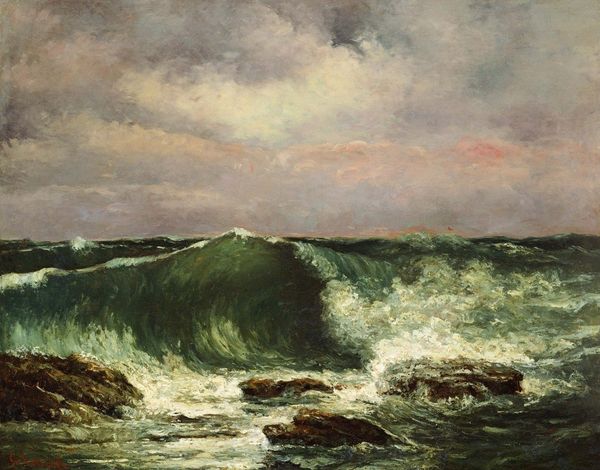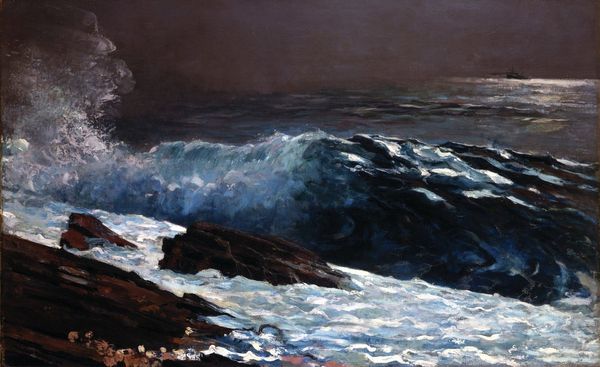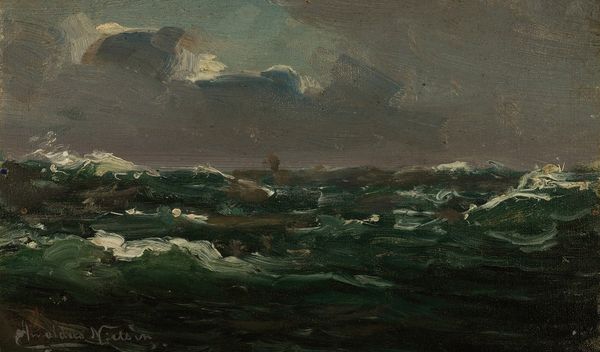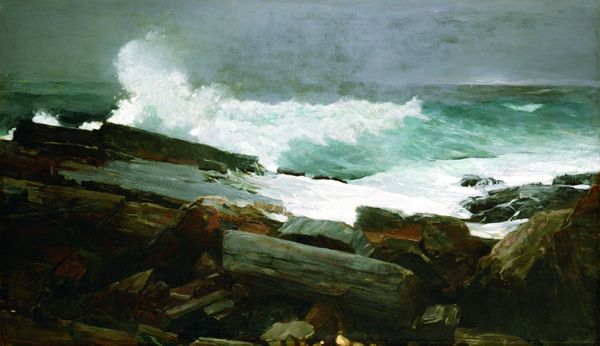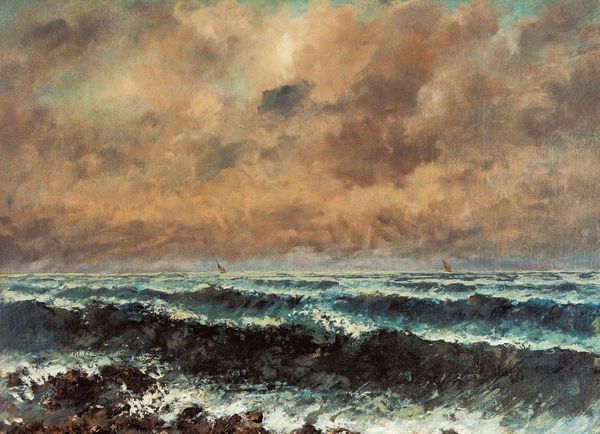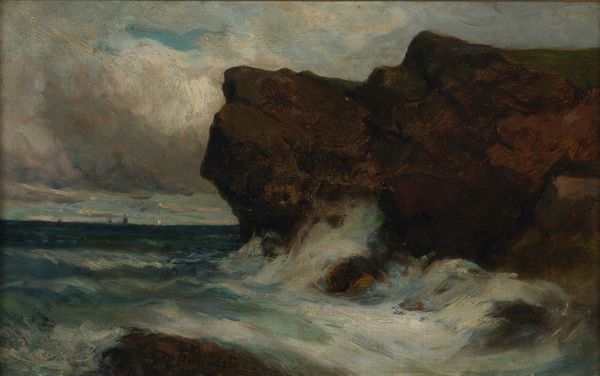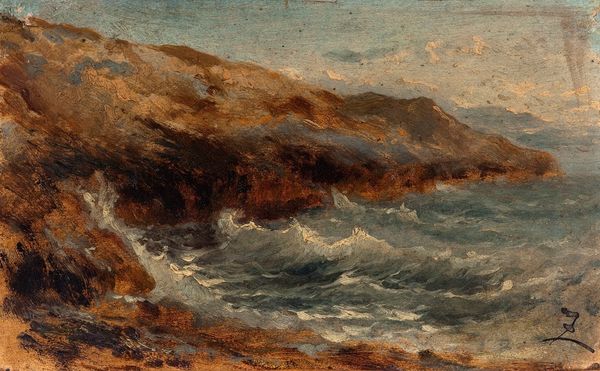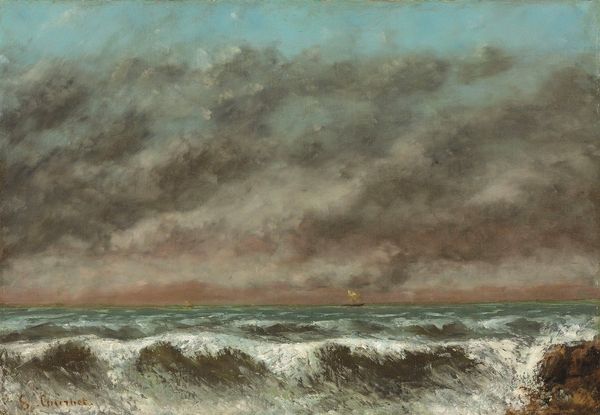
Copyright: Public Domain: Artvee
Editor: This is Gustave Courbet’s "The Wave," painted in 1869. The churning water and dark sky make it feel pretty ominous. What stands out to you as you look at it? Curator: Beyond the visual drama, consider the weight of the sea, its power reflected in countless myths and cultural narratives. Think of the ancient mariners and their gods, the leviathans and the shipwrecks. How might Courbet be invoking this collective memory of the ocean's symbolic importance? Editor: I guess I hadn't really thought about the sea as being linked to myths or gods. I was just seeing the actual waves! Curator: The waves *are* immediate and physical. Yet, even that intense realism, a hallmark of Courbet, invites deeper contemplation. Do you notice how the frothy whites of the wave crest almost resemble skeletal figures in some lights? Editor: Now that you mention it, I see what you mean. It's almost ghostly, a sort of reminder of mortality in the face of nature’s strength. Curator: Exactly. The sea, throughout art history, is both life-giver and taker, a constant cycle represented in those breaking waves. Consider how painters such as Caspar David Friedrich or Winslow Homer explore those same dualities of life and death in the immensity of nature. Editor: That’s a great way to look at it. I came in thinking "landscape," and I'm leaving with a sense of its symbolic depth! Curator: And I am glad to see the continued engagement with primal iconography, offering reassurance that cultural memory persists through all eras.
Comments
No comments
Be the first to comment and join the conversation on the ultimate creative platform.
